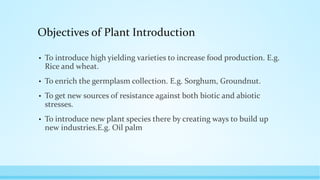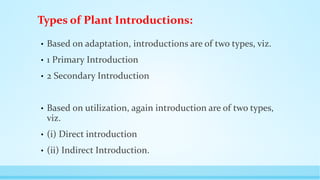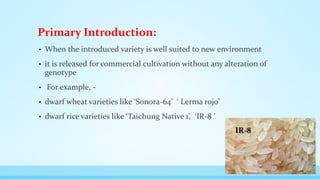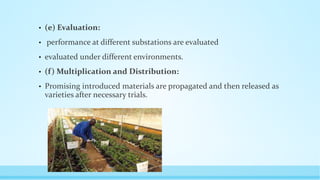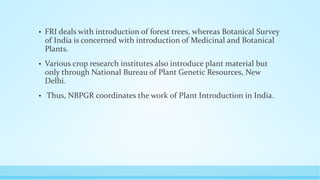The document discusses plant introduction, which involves bringing genotypes to new environments for cultivation. It outlines historical aspects, objectives, types of introductions, procedures for plant introduction, and the regulatory framework in India regarding imports. Additionally, it highlights the merits and demerits of plant introduction, as well as notable achievements in new crop species and varieties.




